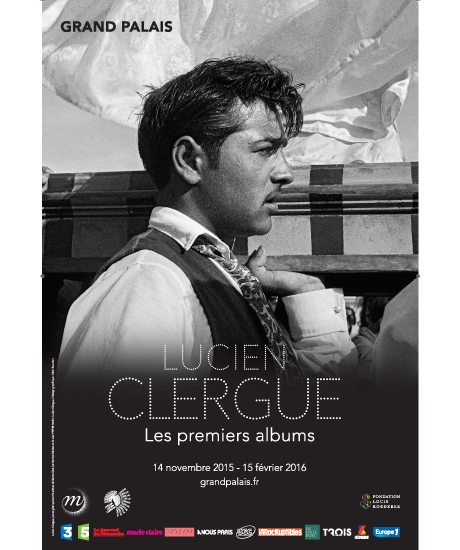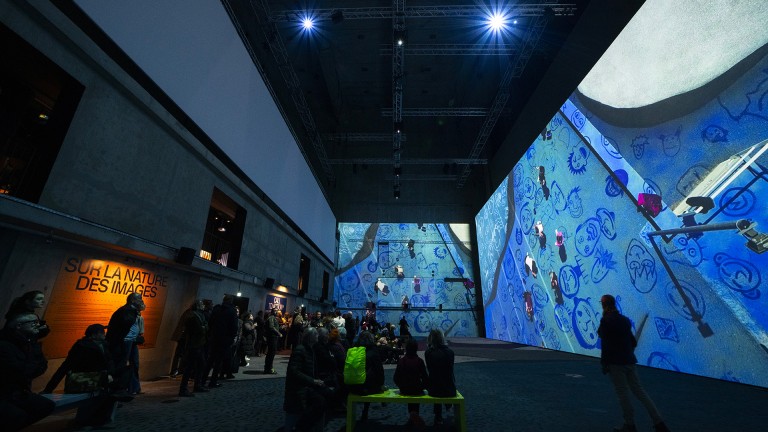Lucien Clergue
From 14 November 2015 To 15 February 2016 Galeries nationales

- Description
- Schedule
- Prices
Description
How did Pablo Picasso decide to sponsor this young man, not yet twenty, as he introduced himself to him at the end of a corrida in Arles to show him his photographs? The answer lies in Lucien Clergue’s first albums, which remained unknown until his recent death at the age of 80 on the 15th November 2014. They comprise advertising sample catalogues originally designed as support for fabrics, tiny colour pictures, blank white pages that the artist claimed and on which he pasted his black and white photographs instead. The unusual intensity and sensitivity that emanate from the whole are astonishing, blending solemnness, the staging of people, still lifes, documentaries, ruins and nudes. Through these three leading albums compiled over two essential years, Lucien Clergue’s entire career is already set.
Realising before others the dominant position that photography is about to take, he is one of the first European photographers to believe that he could make a living from selling his prints in the future. Throughout his life he campaigned for the growing recognition of photography. He then prioritised his formal research to the point that he would hide his extraordinary documentary on the gypsies of Camargue for many years, so as to avoid being mistaken for a photojournalist. This essential and new creativity soon led him to the Museum of Modern Art in New York, where hardly any French photographers had exhibited. He is 27 at the time.
His activity as a photographer was at the heart of his everyday surrounding, working only with broad daylight (powerful and intense), water, sand, the sea, life, death, the female body, the biological evolution of the earth or corrida and its deified bulls. The Camargue and the Alpilles, omnipresent in his art, were the backdrop of his solitary work.
Arles, an isolated city, torn by the Second World War, was promising to become a place for the creation of great European festivals, celebrating culture and festivities once again. It proved auspicious for Lucien Clergue’s fulfilment as an artist. He later became famous thanks to his generous nudes.
Curators : François Hébel and Christian Lacroix
This exhibition is produced by the Réunion des musées nationaux – Grand Palais, in collaboration with Comité Lucien Clergue.
Realising before others the dominant position that photography is about to take, he is one of the first European photographers to believe that he could make a living from selling his prints in the future. Throughout his life he campaigned for the growing recognition of photography. He then prioritised his formal research to the point that he would hide his extraordinary documentary on the gypsies of Camargue for many years, so as to avoid being mistaken for a photojournalist. This essential and new creativity soon led him to the Museum of Modern Art in New York, where hardly any French photographers had exhibited. He is 27 at the time.
His activity as a photographer was at the heart of his everyday surrounding, working only with broad daylight (powerful and intense), water, sand, the sea, life, death, the female body, the biological evolution of the earth or corrida and its deified bulls. The Camargue and the Alpilles, omnipresent in his art, were the backdrop of his solitary work.
Arles, an isolated city, torn by the Second World War, was promising to become a place for the creation of great European festivals, celebrating culture and festivities once again. It proved auspicious for Lucien Clergue’s fulfilment as an artist. He later became famous thanks to his generous nudes.
Curators : François Hébel and Christian Lacroix
This exhibition is produced by the Réunion des musées nationaux – Grand Palais, in collaboration with Comité Lucien Clergue.
Schedule
Sunday, Monday, Thursay, Friday and Saturday from 10:00 am to 8:00 pm
Night session Wednesdays from 10:00 am to 10:00 pm
Closed on Tuesdays
Closing at 6:00 pm Thursdays 24 and 31 December
Closed on 25 December
South-east gallery entrance
Night session Wednesdays from 10:00 am to 10:00 pm
Closed on Tuesdays
Closing at 6:00 pm Thursdays 24 and 31 December
Closed on 25 December
South-east gallery entrance
Prices
Full : 10 €
Reduced : 7 €
"Tribu" (4 people including 2 between 16 and 25 years old) : 27 €
Tickets :
- groups
- individuals
Reduced : 7 €
"Tribu" (4 people including 2 between 16 and 25 years old) : 27 €
Tickets :
- groups
- individuals
Magazine
Magazine
An exhibition for all the family: "Loading, l'art urbain à l'ère numérique" at the Grand Palais Immersif
On the accessible and original theme of street art, through an immersive trail, with a rhythmic soundtrack and interactive activities: Loading is the exhibition you've been looking for to delight the whole family over the holidays! Follow the guide.


